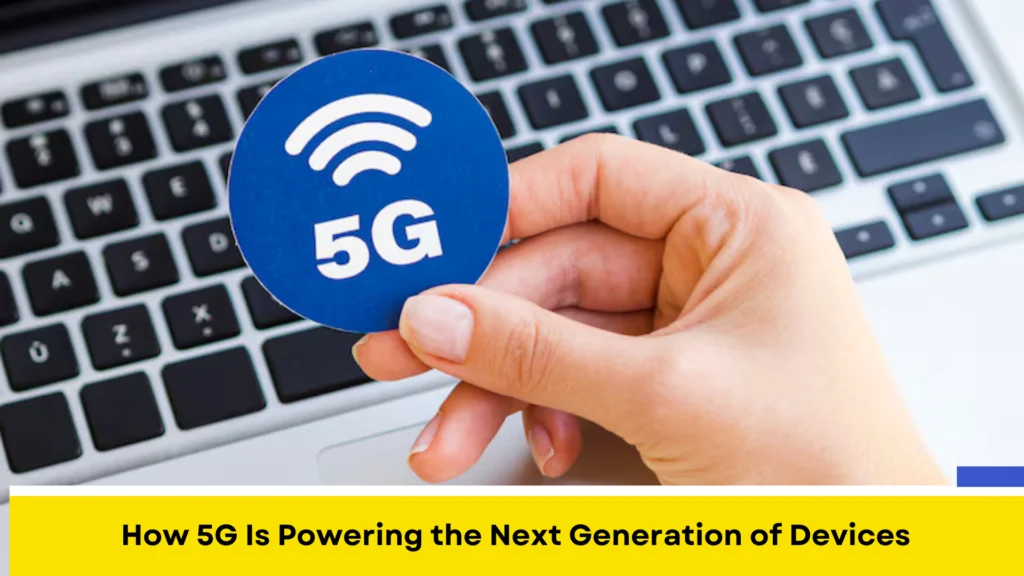The International Telecommunication Union has set specifications for fifth generation (5G) wireless networks, although the phrase is also used in marketing. 4G was created ten years ago and can connect at speeds of up to 1 gigabit per second (1 Gbps). The technology vendors have already shown that systems can run at 4 Gbps, and 5G technologies are trying to make things even better. The technology will enable much shorter latency, just a few milliseconds — how 5G is powering this is key.
The countries on my list that have used 5G Internet technology have the chance to be leaders in the digital economy. 5G will revolutionize the industry in huge ways because it has response times of a few milliseconds and download rates of several gigabits per second. This means that things are going to change.With all the buzz about 2G, 3G, and 4G, it’s easy to see why some people think it’s just a step in the right direction. But it goes further than that.
I think 5G is a big change, like establishing railroads

Faster mobile devices will help consumers, but the biggest benefits will go to businesses that connect factories, logistics, transportation, labor, and agriculture. In theory, 5G will make it possible to protect Industry 4.0 processes and products when sensors and machines talk to each other and make decisions on their own. That’s what 5G can do. 5G can give mobile services the availability, bandwidth, and speeds they need to make end-to-end encryption not affect performance assurance.
This means that it is a fantastic chance to make the mobile sector much safer. First, the Internet of Things wasn’t always unsafe; it was just hard to keep small sensors safe until now. Also, people didn’t think sensor security was vital, but as time goes on, more and more hacks by states and organized crime illustrate why they should worry about it. Because 5G can connect mobile devices, we might see something new come out of the big ideas of smart cities and digital government, as well as in areas like public health, public safety, security, and military.
When there is a crisis, local networks stop working

Picture a mobile army brigade with 4-5 drones flying over the city on a 5G network. It would take a hundred more drones to replace the ones that power the 5G network. Even then, some of them might be shot down, but this would still be a lot less expensive than the existing ways of communicating. Also, consider about a 5G network that has an incident control post to keep people safe, like one that has equipment that can be driven to the scene of an incident. When there is a crisis, local networks stop working.
This is unavoidable because either too many people are trying to use the network or there isn’t enough electricity to keep it running. Another thing that will have a big effect in the future is that 5G will let people work from anywhere. Some businesses won’t be able to deal with the huge amount of data that 5G would create. This is a tremendous chance for people who know how to use technology and have the abilities to take advantage of the huge insights it will give them. The ongoing purchase procedure in most government organizations could slow down the deployment of 5G, just like any other technology that is changing quickly.
I’ll talk more about this in my next columns

The last job I had at the UK Ministry of Defence was to change the way they bought things from atomized needs, which had a six-inch system, documents outlining the necessary user needs, and hundreds of performance measures, to outsourcing, where you know what you want and that it might change as the process goes on. This needs more motivation and a whole new way of doing things. 5G makes it possible to have high network availability, high network bandwidth, and short latency times at the edges of the network, which are mobile devices and sensors.
I have no doubt that this is a game-changing solution that will be one of the key drivers of the digital economy, robots (including self-driving cars), artificial intelligence, analytics, the Internet of Things, and augmented and virtual reality. This will provide early adopters a big edge over their competitors. 5G is becoming a reality. Companies need to plan ahead so that they are ready when the hardware and services are offered for sale. But they should also start thinking about how to prepare ahead and make the most of being the first to have it. I’ll talk more about this in my next columns.
Conclusion

Mike Stone is in charge of infrastructure, government affairs, and healthcare at KPMG, where he is a global technology transformation leader. He worked for the UK Ministry of Defence as the Chief Digital Information Officer, for BT Global Services as the President of Service Design and Chief Information Officer, and he had been in the British Army for 28 years.
The arrival of 5G technology has opened up a whole new world of innovation in wearable electronics. 5G’s super-fast speeds, super-low latency, and huge networking possibilities will make it possible to create next-generation wearable technology that is more powerful, useful, and flexible than ever before.
5G is changing wearable technology in a big way by making it possible to transmit high-definition video and talk to people in real time. Wearable technology, such smart glasses, smartwatches, and fitness trackers, will soon be able to use augmented reality (AR) and virtual reality (VR) more clearly and responsively. For instance, a pair of 5G AR glasses lets you see digital information in the actual world in real time, which makes the experience and interaction with the environment around you better.



